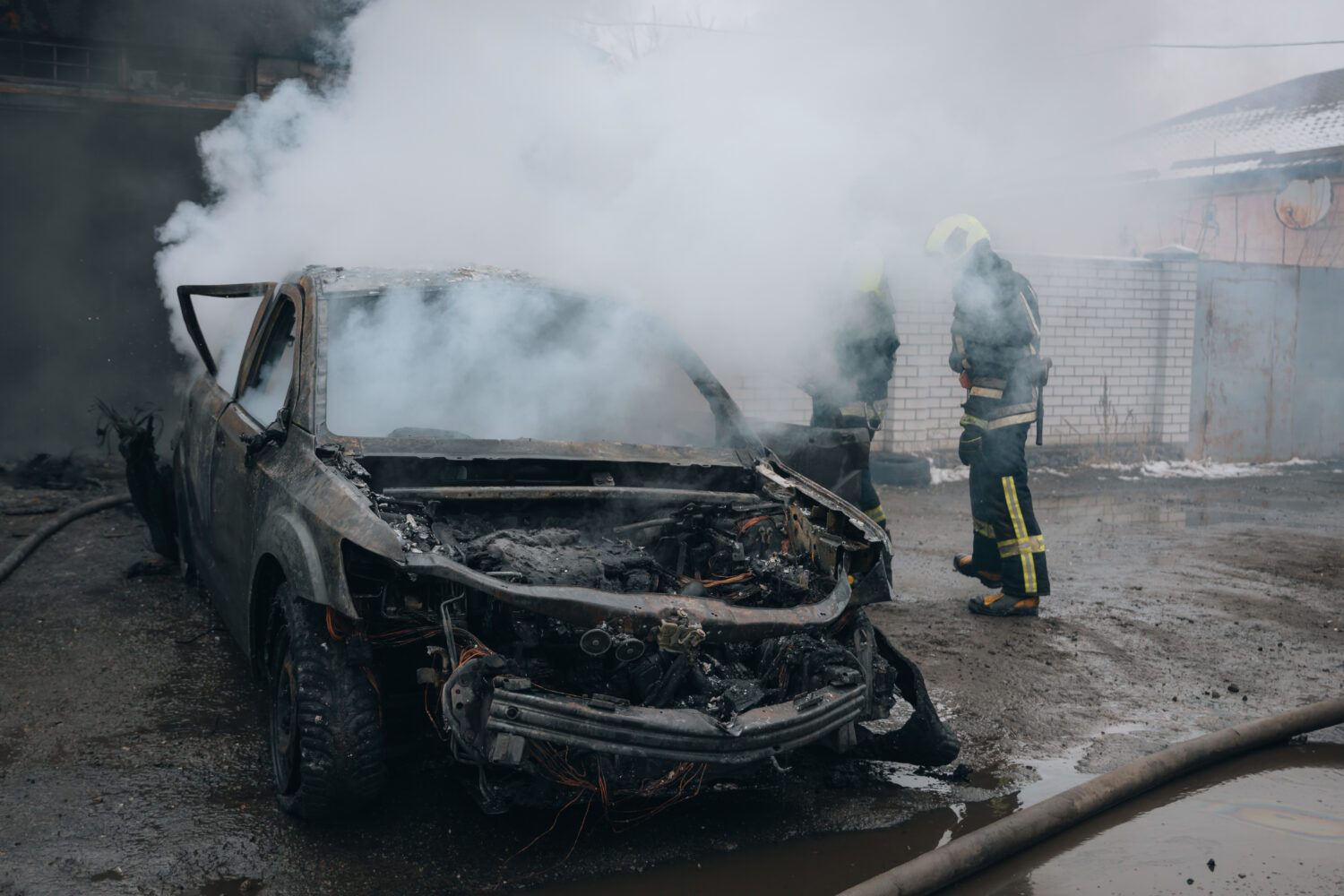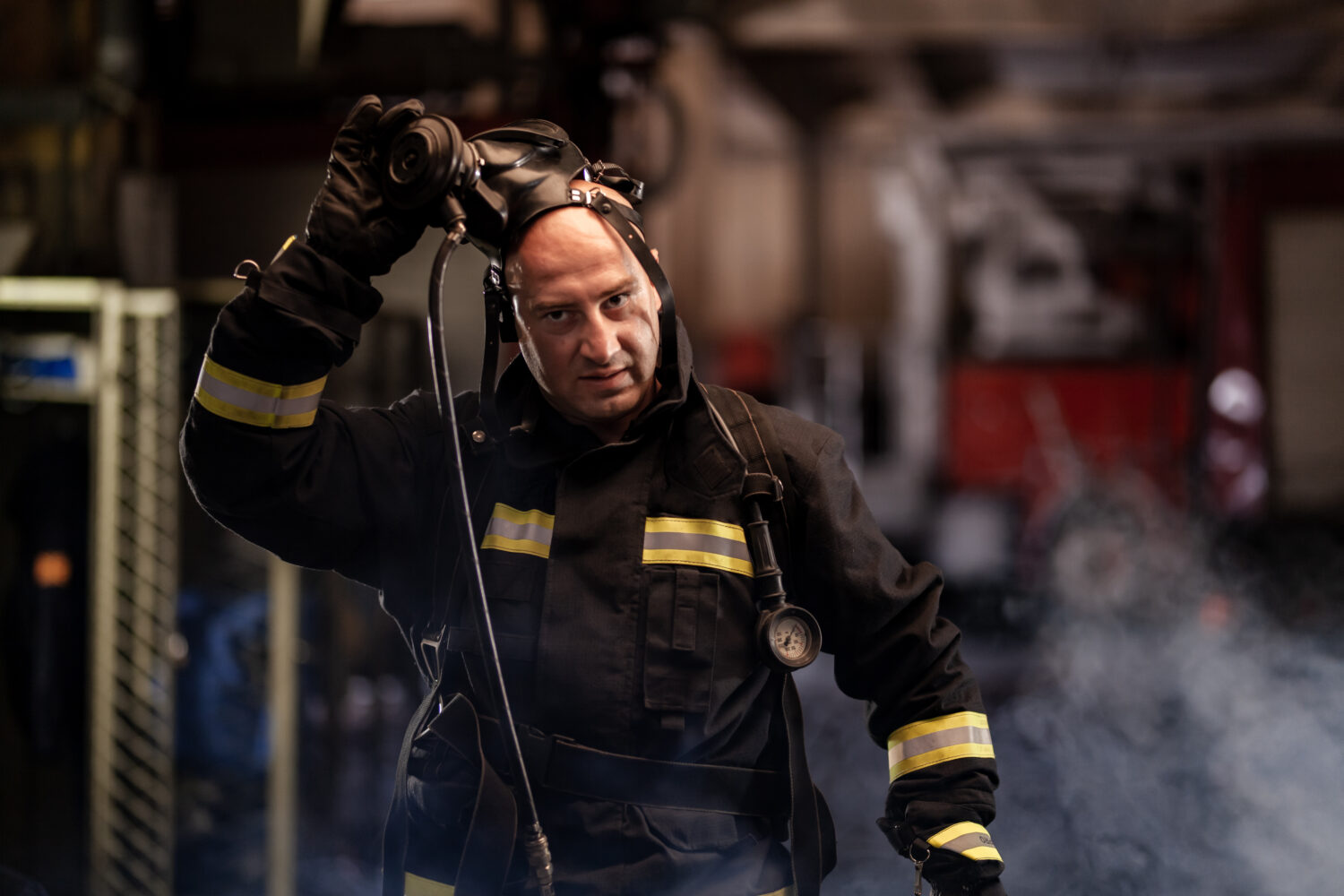Firefighters have always faced immense danger from flames, collapsing structures, and extreme heat. Today, there’s an equally deadly yet less obvious threat: toxic airborne chemicals. When synthetic materials and electric vehicles (EVs) burn, they release a “toxic soup” of gases— invisible, odorless, and highly dangerous.
From foams in couches to lithium-ion batteries, each fire produces hazardous gases that linger after the flames are extinguished. Many firefighters remove masks once suppression is over, unaware of ongoing risks. Without proper detection, they may inhale toxins with serious long-term health effects.

Airborne Hazards: What’s in the Smoke?
Fires today are more dangerous than ever, not just because of the flames or frequency, but because of what’s burning. By 2050, wildfire smoke could drive up to 73% more deaths in the U.S. per year, making smoke one of the most significant health impacts of climate change. At the wildland-urban interface, where wildfires meet modern communities, the burning of homes, vehicles, and buildings release an invisible mix of highly toxic chemicals into the air.
- Synthetic materials: Found in furniture, mattresses, carpeting, insulation, and building materials, can emit hydrogen cyanide, benzene, and other carcinogens. Unlike natural materials, modern synthetics make today’s fires more toxic and challenging.
- Electric Vehicles (EVs): Lithium-ion batteries are particularly hazardous, releasing hydrofluoric acid and other toxic gases when they catch fire. EV fires can burn hotter and reignite hours or days later, creating ongoing risks for crews.
- Plastics: Overreliance on easily-melted plastic materials, such as fuel storage tanks, further exacerbates the remediation and mitigation efforts during large fires. Additionally, the runoff can contaminate water sources and habitats.
The Gaps in Protection

Despite the reality of evolving fire threats, many safety protocols have not kept pace. Once the flames are out, firefighters are often permitted to remove their masks, even though hazardous gases can remain in the air for hours, sometimes days. The smoke may have cleared, but invisible toxins from airborne hazards remain.
The challenge is compounded by limited access to technology. While some large urban departments are beginning to explore advanced monitoring solutions, many smaller or rural departments lack the resources to identify airborne hazards in real time. That means firefighters are relying on instinct and experience alone when deciding whether a scene is safe. Decisions that can carry lifelong health consequences.
The cost of these gaps is already visible. Cancer has become a leading cause of firefighter line-of-duty deaths, linked in part to chronic exposure to carcinogens encountered on the job. Even the most skilled and experienced crews are being left unprotected by outdated protocols and insufficient tools, underscoring the urgent need to modernize firefighter safety standards.
XplorIR: Real-Time Gas Identification and Quantification in the Field
Protecting firefighters needs more than courage; it needs actionable data. XplorIR is a handheld device that detects, identifies, and quantifies more than 5,000 airborne chemicals in seconds, delivering real-time data in complex environments like wildfire smoke, structural, or EV fires. The device is lightweight, portable, and deployable in the field, continuously monitoring conditions for ongoing awareness.
Firefighters get critical intel to know when masks and gear are necessary, reducing toxic exposure and protecting long-term health without slowing emergency response. XplorIR empowers fire departments to protect crews and maintain operational speed and effectiveness.
Protecting first responders is essential as the rates and risks of fires escalates. Luckily the U.S. government is taking notice. In the FY26 budget, approximately $350 million in firefighter grants was earmarked for safety equipment and training. This funding helps departments get advanced detection tools like XplorIR and close a persistent safety gap.
As fires evolve, so must firefighter safety. The flames may be visible, but the greatest dangers often are not. Advanced tools like XplorIR equip firefighters with real-time awareness, reduce toxic exposure, and ensure those who face danger can take protective action.